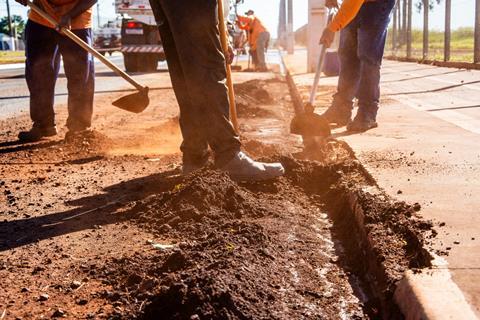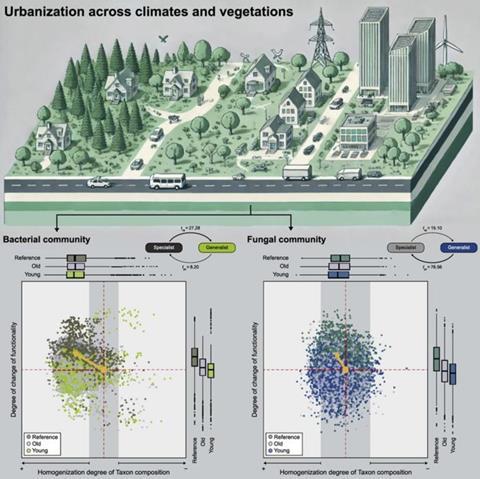Urbanization is reshaping soil microbial communities worldwide, driving an unexpected homogenization of bacterial populations while fungal communities remain more resistant to change.
A groundbreaking study reveals that urban environments favor bacterial generalists, which adapt to diverse conditions, whereas fungi maintain specialized ecological roles. Despite these divergent responses, the functional overlap between bacteria and fungi ensures ecosystem resilience, allowing essential processes like nutrient cycling to persist even in highly disturbed urban soils.

Soil microbes play a fundamental role in nutrient cycling and organic matter decomposition, yet their response to urbanization remains poorly understood. While previous research has demonstrated that urbanization leads to the homogenization of plant and animal communities, its impact on microbial communities—particularly their functional traits—has received less attention.
READ MORE: Impact of rapid urbanization on the emergence of zoonotic diseases
READ MORE: West Nile virus emergence and spread in Europe linked to agricultural activities
Given the crucial role of microbes in sustaining ecosystem health, understanding their response to urban pressures is essential for predicting future ecological changes. This knowledge gap underscores the need for comprehensive research on how urbanization influences microbial communities across different biomes.
Complex relationship
A recent study (DOI: 10.1016/j.ese.2025.100547) published in Environmental Science and Ecotechnology on March 21, 2025, by researchers from Shanghai Jiao Tong University, the University of Helsinki, and other global institutions, provides new insights into this complex relationship. By analyzing microbial communities in boreal, temperate, and tropical biomes, the research reveals that urbanization homogenizes bacterial communities while fungal communities remain more specialized. Crucially, the study highlights how these microbial shifts impact ecosystem resilience, demonstrating that despite their differing adaptive strategies, bacteria and fungi sustain critical ecological functions through overlapping traits.
Researchers examined soil microbial communities along an urbanization gradient—from undisturbed forests to urban parks of varying ages—across three climatic zones. The findings show that bacterial communities became increasingly similar in urban environments, with their average similarity rising from 79% in forests to 85% in young urban parks. In contrast, fungal communities exhibited greater specialization and resisted homogenization.

The study also found that 90% of bacteria in urban soils are generalists, thriving in diverse conditions, whereas 83% of fungi are specialists, highly adapted to specific environments. This divergence stems from bacteria’s rapid evolutionary adaptability, facilitated by shorter generation times and horizontal gene transfer, whereas fungi, with slower evolutionary rates, remain tied to specific niches. Despite these differences, the study underscores the resilience of urban soils, as bacteria and fungi share functional traits that sustain carbon and nutrient cycling.
Powerful force
“Urbanization is a powerful force reshaping soil microbial communities, yet bacteria and fungi respond in strikingly different ways,” said Dr. Nan Hui, the study’s corresponding author. “Bacteria swiftly adapt to urban conditions, whereas fungi retain their ecological specialization, highlighting the complex interplay between microbial adaptation and ecosystem resilience.”
The findings have significant implications for urban planning and ecological management. Understanding how microbial communities respond to urbanization can inform strategies to design green spaces that support soil health and biodiversity. The study suggests that despite urban disturbances, soil microbial communities retain functional resilience due to redundancy in their ecological roles. This resilience is critical for sustaining key ecosystem services, such as nutrient cycling and organic matter decomposition. Future research could explore how urban management practices—such as soil amendments or strategic vegetation choices—can further enhance microbial diversity and ecosystem functioning in cities.







No comments yet